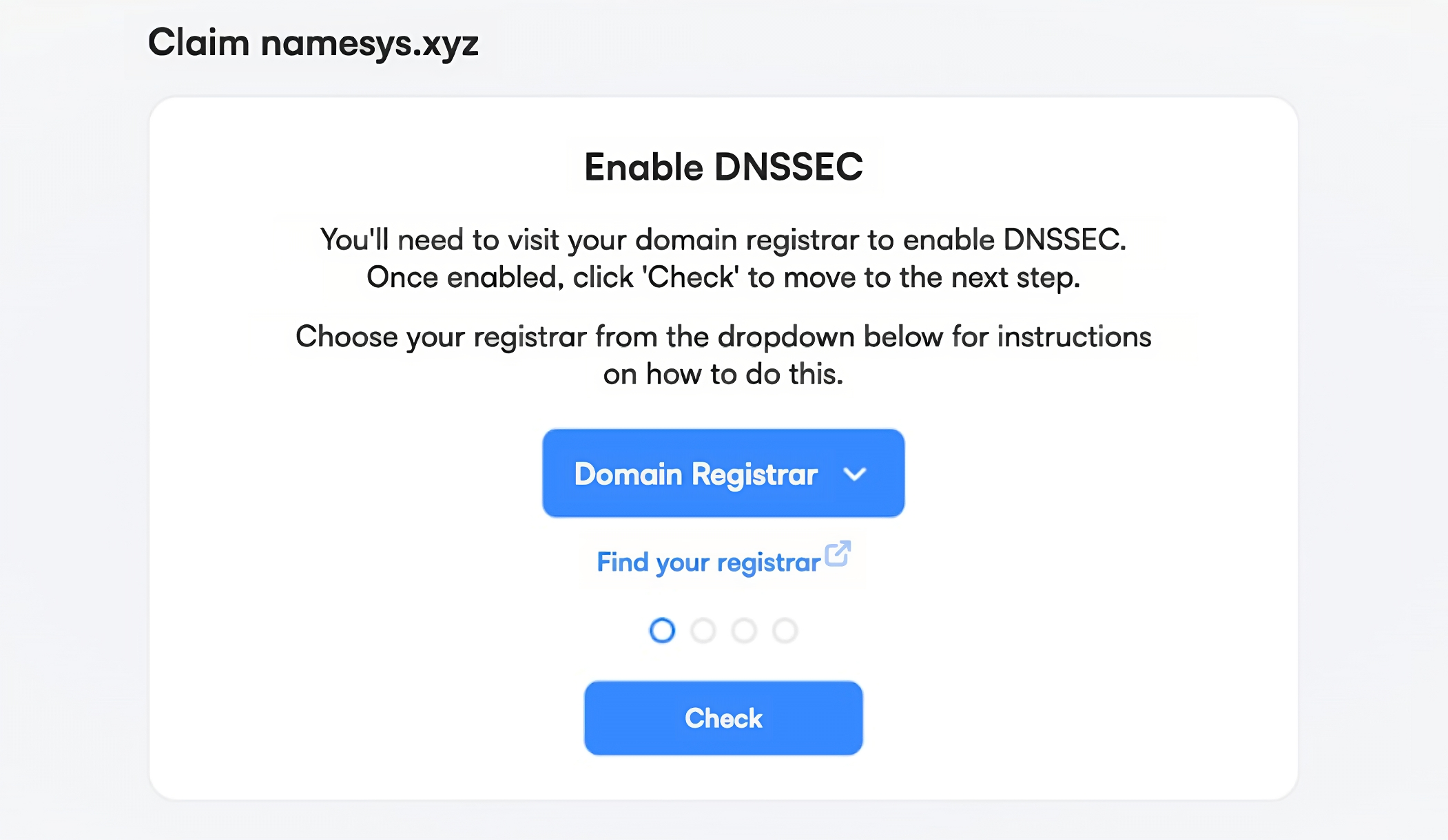
 by Neelam Choudhary
by Neelam Choudhary
ENS vs. DNS - Will ENS Replace DNS in the Future?
DNS has been a fundamental part of the internet infrastructure for decades and is widely used and accepted. ENS, on the other hand, is relatively newer and specific to the Ethereum ecosystem. The Ethereum Name Service (ENS) and the traditional Domain Name System (DNS) are both systems that facilitate the mapping of human-readable names to machine-readable IP addresses. In this blog, let’s explore the concepts of ENS (Ethereum Name Service) and DNS (Domain Name System) and discuss whether ENS could potentially replace DNS in the future.
Understanding DNS (Domain Name System)
DNS (Domain Name System) is a hierarchical and decentralised system that translates human-readable domain names (like www.facebook.com) into numerical IP (Internet Protocol) addresses that computers use to identify each other on a network. DNS plays a crucial role in making the internet more user-friendly by allowing people to access websites using easy-to-remember domain names instead of having to memorise numerical IP addresses.
Imagine navigating the internet without the convenience of domain names. Instead of typing ‘facebook.com’ into your browser, you’d have to remember and use the numerical IP address associated with Facebook, 69.63.176.13. Now, recalling this sequence of numbers each time you want to visit Facebook would be impractical and challenging for most people. This is where DNS comes to the rescue.
Here’s a brief overview of how DNS works:
User Input:
- When a user enters a domain name into their web browser (e.g., www.facebook.com), the browser finds the corresponding IP address to establish a connection with the server hosting the website.
DNS Query Initiation:
- The DNS resolution process begins with a DNS query initiated by the user’s device or web browser. This query is sent to a DNS recursor.
DNS Recursor:
- The recursor is typically a server that handles DNS queries on behalf of client machines (like web browsers).
Root Nameserver:
- The DNS recursor starts by contacting a root nameserver. The root server provides information on where to find specific top-level domain (TLD) nameservers.
TLD Nameserver:
- The root nameserver directs the DNS recursor to the TLD nameserver relevant to the domain in question (e.g., the “.com” TLD server).
Authoritative Nameserver:
- The TLD nameserver then directs the DNS recursor to the authoritative nameserver responsible for the specific domain (e.g., “facebook.com”).
IP Address Retrieval:
- The authoritative nameserver returns the IP address associated with the requested domain to the DNS recursor.
DNS Recursor Response:
- The DNS recursor receives the IP address and, in turn, responds to the initial DNS query made by the user’s device.
Webpage Loading:
- Armed with the IP address, the user’s device can now establish a connection to the server hosting the desired webpage, allowing the webpage to load in the user’s browser.
This entire process occurs behind the scenes, and users typically experience no direct interaction with the DNS system beyond entering the domain name in their web browsers. DNS plays a vital role in making the internet user-friendly by translating human-readable domain names into the numerical IP addresses essential for data communication across the internet.

Introduction to ENS (Ethereum Name Service)
ENS is a decentralised domain name system built on the Ethereum blockchain. Similar to how traditional domain names work with the Domain Name System (DNS) on the internet, ENS allows users to register and manage domain names that end with the “.eth” extension. These domain names can be associated with Ethereum addresses, decentralised websites, or other content on the blockchain.
Check out our detailed blog post on ENS Blog Link to learn more about its functionalities and practical use cases.
ENS is often associated with .eth domain names; however, ENS is not limited to just these names. ENS is a comprehensive naming infrastructure built on the Ethereum blockchain, designed to support a wide range of names beyond the .eth extension. While .eth domains are the most common, ENS is flexible enough to accommodate various types of names and use cases.
ENS enables users to register and manage decentralised domain names and provides censorship-resistant and decentralised alternatives to traditional domain name systems. Beyond associating domain names with Ethereum addresses, ENS can be used for websites, decentralised applications (dApps), and other blockchain-related services.
One noteworthy feature of ENS is its ability to support custom top-level domains (TLDs) and subdomains. This means that users have the flexibility to create personalised and unique naming structures within the ENS framework, going beyond the constraints of traditional domain naming conventions.
Comparison of ENS and DNS
The Ethereum Name Service (ENS) and the Domain Name System (DNS) are both integral components of the internet. However, they operate on different architectures and philosophies.
- DNS System:
- Built on a centralised and hierarchical system.
- Relies on a distributed network of servers.
- Translates human-readable domain names into IP addresses.
- ENS System:
- Built on blockchain technology, specifically on the Ethereum blockchain.
- Uses smart contracts to manage the registration and resolution of domain names.
- Operates in a decentralised manner.
A traditional website typically relies on DNS and a centralised web server, whereas a decentralised website uses ENS and IPFS for file storage and content distribution.
The DNS system is centralised to some extent, as the root domain is controlled by a few organisations, and each level of the domain hierarchy is managed by specific entities. This centralisation can make the DNS susceptible to censorship or control by a single authority. ENS, on the other hand, is designed to be decentralised and censorship-resistant. By leveraging blockchain technology, it eliminates the need for a central authority, and ownership and control of domain names are determined by smart contracts on the Ethereum network.
Domain names in the DNS are owned and controlled by the entities that register them through domain registrars. If you own a domain and want to make changes or solve a problem, you usually talk to that registrar. They’re like the middlemen who help manage and keep records for your chosen website name. This process, however, can have some downsides. If there’s ever a disagreement or you want to move your domain somewhere else, you often need to work through these middlemen. In ENS, ownership and control of domain names are managed through Ethereum smart contracts. Users have private keys that prove ownership, and changes to ownership or settings are executed through cryptographic signatures. This provides users with more direct control over their domain names.
The centralised nature of DNS makes it more vulnerable to security threats, such as DDoS attacks, and potential censorship by governments or other authorities. ENS, being built on a decentralised blockchain, is more secure and resistant to censorship. It benefits from the security features of the Ethereum network, including its distributed and tamper-resistant nature.
Will ENS Replace DNS in the Future?
While ENS is gaining popularity in the blockchain and decentralised space, it is not designed to replace DNS. They serve different ecosystems and functions. DNS is still the primary system for domain name resolution on the broader internet. However, in the context of blockchain and decentralised applications, ENS provides a decentralised alternative for managing domain names. However, there could be increased integration or interoperability between blockchain-based naming systems like ENS and traditional DNS. The success and adoption of any naming system depend on the support it receives from the user and developer communities.
Steps to Import a DNS Name:
ENS enables users to import existing DNS names like .com, .net, or .org into the ENS system. Here’s a simple guide on how to import a DNS name into ENS:

- Before integrating a DNS domain name with ENS, enable DNSSEC:
- Verify if your domain registrar or hosting provider supports DNSSEC.
- Follow the instructions provided by your registrar or hosting provider to enable DNSSEC for your domain.
-
To prove ownership of your DNS name, create a TXT record in your DNS zone using your registrar or hosting provider’s management interface.
- Claim the DNS Name:
- Go back to the ENS Manager App.
- Connect your wallet.
- Search for your DNS domain name and click on it to continue.
- Press the “Register” button to complete the process of linking the DNS name with ENS.
Well, Do you think the decentralised approach of ENS has the potential to revolutionise naming services on the internet, or will DNS continue to dominate?
While ENS is gaining popularity in the blockchain and decentralised space, it is not designed to replace DNS. They serve different ecosystems and functions. DNS is still the primary system for domain name resolution on the broader internet. However, in the context of blockchain and decentralised applications, ENS provides a decentralised alternative for managing domain names. However, there could be increased integration or interoperability between blockchain-based naming systems like ENS and traditional DNS. The success and adoption of any naming system depend on the support it receives from the user and developer communities.
We hope you enjoyed reading our blog. Don’t forget to stay connected with us on Twitter @namesys_eth for the latest updates. See you next week.